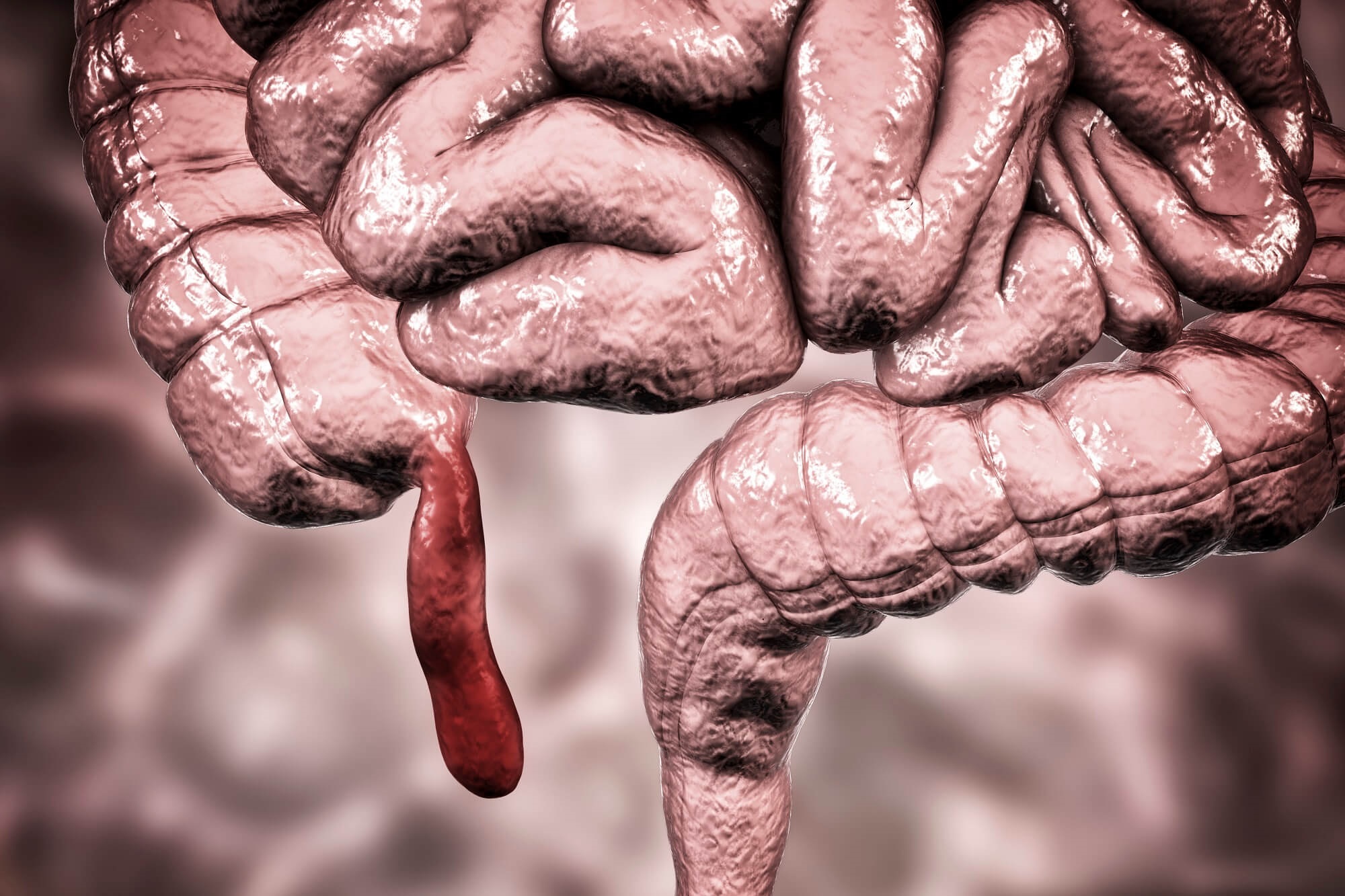Appendicitis is a common and serious condition that affects people of all ages. It occurs when a part of your large intestine called the appendix becomes inflamed and swollen due to infection or other reasons.
This type of inflammation can cause pain throughout the abdomen, especially in the lower right side of the body. The symptoms of appendicitis are very similar to those of stomach flu, which makes it difficult for most people to identify these symptoms on their own. If you think you may be experiencing appendicitis, here’s what you should know about how to identify this disorder.
How Appendicitis Develops
Appendicitis usually develops slowly over time; however, it can also develop quickly. This disorder is caused by an infected appendix that has become inflamed because of a bacterial infection.
The bacteria that causes appendicitis often enter our bodies through food or beverages contaminated with fecal matter. Bacteria from the digestive system of animals can also get into our bodies and cause illness if we eat undercooked meat or raw vegetables. Certain viruses, such as norovirus, have been linked to appendicitis, but they only cause problems when they spread to people who have weakened immune systems.
When the bacteria infect the appendix, it begins producing fluid and pus. As this process continues, the swelling in the appendix gets larger until it becomes painful and uncomfortable. In some cases, the appendix ruptures, causing peritonitis—inflammation of the abdominal cavity that spreads to the rest of the body.
In rare cases, appendicitis can lead to a life-threatening condition known as acute appendicitis. People who experience appendicitis typically feel sick after eating a meal containing foods high in fat and protein. For example, eggs contain fat, while chicken contains proteins like fowl, and bacon contains both fats and proteins.
If you suspect that you are developing appendicitis, seek immediate medical attention. However, if you think it’s just a stomach flu, you can still recover at home. Here’s everything you need to know about how to identify signs of appendicitis.
Symptoms of Appendicitis
Most people who have appendicitis will experience one or more of the following symptoms:
Severe abdominal pain in the lower right quadrant of the abdomen. This area is located directly below the ribs in the center of the chest.
A fever of 100 degrees Fahrenheit or higher. Many people with appendicitis also report chills, sweating, nausea, vomiting, and diarrhea.
Abdominal tenderness and fullness—a feeling of tightness in the abdominal muscles. This feeling can make it hard to breathe.
An inability to pass gas normally. Gas that comes out of the anus may have a foul odor or taste.
Swelling around the belly button or in the groin area. This is another clue that suggests that you are having trouble passing bowel movements.
Pain that radiates down the leg toward the knee joint.
Persistent nausea and/or vomiting. Persistent nausea and/or vomiting means that nausea and/or vomiting continues for more than 24 hours.
These symptoms can occur alone or together. You may not develop any of them, and you may only experience a few of them. Your doctor will ask questions about any of the symptoms you are experiencing so he or she can determine whether you’re suffering from appendicitis.
In the above paragraphs we have stated some common signs of appendicitis which may be seen in human body if you ever get it. So if you ever feel any of these issues in your body then it is must for you to consult with a professional doctor. As if your case gets worse than they have to do an operation to remove it completely from your body.
It’s important to note that even though you may have experienced several of these symptoms, you don’t necessarily have appendicitis. Some conditions can mimic the symptoms of appendicitis, including:
Intestinal obstruction (where food blocks your intestines),
Urinary tract infections,
Colon cancer.
If you suspect that you are experiencing appendicitis, your doctor will perform an x-ray, blood test, CT scan, ultrasound exam, or surgery to confirm that you do have appendicitis. If appendicitis is confirmed, treatment may include antibiotics, pain medications, intravenous fluids, and surgery.
Causes of Appendicitis
Appendicitis can affect anyone, regardless of age, gender, race, or ethnicity. It usually doesn’t show up until adulthood, although there are exceptions. If you’re a teenager, you may experience appendicitis without knowing why. And if you’re younger than 2 years old, or older than 65 years old, you may develop appendicitis without warning.
There are many factors that may contribute to the development of appendicitis, such as:
Stomach bugs, such as viral gastroenteritis, rotavirus, and Norwalk virus, can result in a severe case of appendicitis.
Eating certain types of red meat, white fish, poultry, shellfish like shrimp and lobster, and dairy products can increase your risk of getting appendicitis.
Certain types of fatty and oily foods, such as butter, cheese, and fried foods, may trigger appendicitis.
Chronic constipation, resulting from a diet low in fiber, can weaken your digestive system and increase your chances of getting appendicitis.
Having Crohn’s disease or ulcerative colitis, two autoimmune diseases, increases your chances of developing appendicitis.
People who smoke tobacco have a higher chance of developing appendicitis than non-smokers.
Although it’s impossible to prevent appendicitis completely, you can decrease your risk of developing this condition by staying away from foods high in fat and protein. Make sure your diet includes plenty of fruits and vegetables, whole grains, legumes, nuts, seeds, and beans. Eating small meals instead of three big ones can help keep your weight in check because eating fewer calories can reduce your risk of obesity, which is a major factor in the development of appendicitis.
You can also reduce your risk of appendicitis by taking supplements and reducing environmental toxins. A healthy lifestyle, including regular exercise and proper nutrition, can help boost your immunity and protect your body against illnesses that can lead to appendicitis.
Treatment Options for Appendicitis
Depending on the severity of your appendicitis, your doctor may prescribe medications or recommend surgery. Surgery is considered a last resort for patients with appendicitis, since it requires hospitalization, anesthesia, incisions, and general anesthesia.
Antibiotics are commonly used to treat appendicitis. These drugs kill off the bacteria that cause appendicitis, thereby relieving the pain and discomfort associated with this condition.
Because antibiotics only treat the symptoms of appendicitis, surgical removal of the appendix is necessary in order to treat this disorder. An appendectomy involves removing the appendix, along with any surrounding tissue that looks unhealthy.
Appendectomies are generally performed using either an open approach or laparoscopic procedure. Open surgeries involve making a long incision across the abdomen that extends from the navel to the pubic bone. Laparoscopic procedures are performed with smaller incisions made in the abdomen, allowing your doctor to view the inside of your abdomen without exposing you to unnecessary risks.
Some doctors will remove the appendix without doing any tests, and many of them believe that waiting to see what happens with the appendix before removing it is risky. While waiting for the appendix to rupture can be dangerous, removing the appendix too soon can lead to complications.
Your doctor may choose to place a drainage tube in the abdominal cavity during an appendectomy to drain the excess fluids produced by the appendix. This tube remains in the body until the fluid stops coming out of it. This procedure may cause mild discomfort, but it does not require anesthesia.
Once the appendix is removed, you might experience some abdominal discomfort, bloating, and cramping. Your doctor may give you additional medication to relieve these symptoms.
After receiving an appendectomy, your recovery period depends upon the extent of your injury. Most patients can return to normal activities within 1 week, but some people may take longer. You’ll want to follow your doctor’s instructions carefully to avoid reoccurring infection or further pain.



